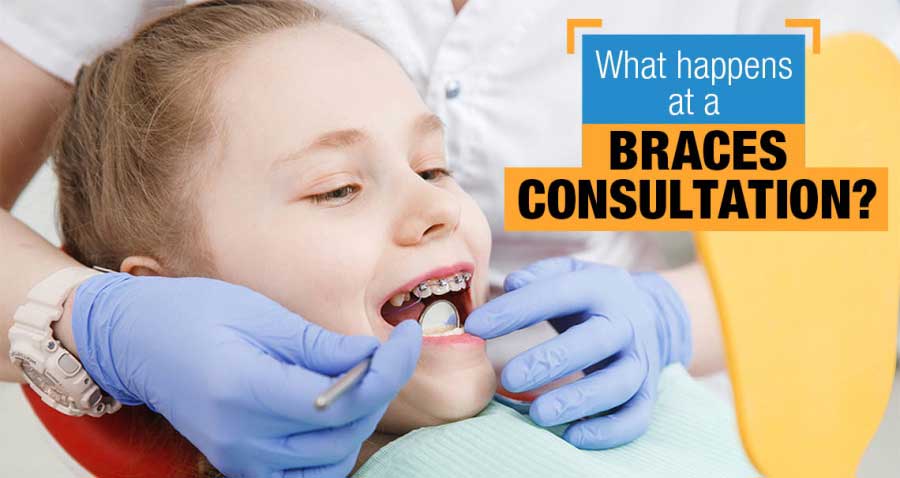Expert Cumming Braces and Aligners: What to Know Before You Go to
Wiki Article
Comprehensive Overview to Orthodontics Procedures for Fixing Dental Misalignments
Comprehending the complexities of each procedure, including their mechanisms, advantages, and possible downsides, is essential in making notified decisions regarding one's orthodontic treatment. As we navigate through the comprehensive overview to orthodontic procedures for correcting dental imbalances, the complex information of each method will certainly unravel, shedding light on the path towards a functional and harmonious dental alignment.Orthodontic Procedures Summary

Routine changes and tracking are important components of orthodontic therapy to make sure progress is on track and to make any essential alterations along the means. By going through orthodontic procedures, clients can not just accomplish a straighter smile yet likewise enhance their overall dental health and wellness and function.
Typical Dental Braces: Just How They Function
When thinking about orthodontic treatments for dental misalignments, traditional dental braces stand out as a tried and true technique for dealing with teeth placing. Typical braces consist of brackets, wires, and bands that function with each other to apply constant pressure on the teeth, gradually relocating them into the wanted placement.
One trick element of how conventional dental braces work is the procedure of bone makeover. As pressure is applied to the teeth via the dental braces, the bone bordering the teeth is reshaped to sustain the new tooth positions. This renovation is vital for the long-term stability of the corrected placement. Clients will need normal adjustments at the orthodontist's office to make certain the braces remain to use the proper pressure for reliable teeth movement.
Invisible Aligners: Benefits And Drawbacks
Unnoticeable aligners offer a hassle-free and very discreet alternative to standard braces for dealing with oral misalignments. These clear, personalized trays are essentially unseen when put on, making them an attractive option for people looking for a more visually pleasing orthodontic treatment. Among the key benefits of unnoticeable aligners is their removability, permitting much easier maintenance of oral health contrasted to conventional dental braces. Individuals can get rid of the aligners prior to consuming or brushing their teeth, lowering the danger of food getting embeded the appliance and simplifying the cleansing process.
Surgical Orthodontic Options
Surgical interventions in orthodontics existing sensible choices for resolving complicated oral misalignments that may not be efficiently fixed via conventional orthodontic therapies. While conventional dental braces and invisible aligners can fix many orthodontic concerns, particular instances call for medical intervention to achieve optimal outcomes. Surgical orthodontic options are normally recommended for extreme malocclusions, considerable jaw disparities, and situations where the underlying bone framework requires modification to accomplish correct placement.One common medical orthodontic treatment is orthognathic surgical treatment, which involves repositioning the jaws to correct functional issues such as problem chewing or talking. This surgical treatment is usually carried out in partnership with an orthodontist that assists straighten the teeth prior to and after the procedure. Surgical orthodontics might also entail procedures to expose impacted teeth, eliminate cumming aligners excess periodontal cells, or reshape the jawbone to create a more unified facial profile.
Prior to thinking about surgical orthodontic choices, individuals undertake an extensive assessment to determine the necessity and prospective advantages of such treatments. cumming braces. While surgical procedure may appear daunting, it can significantly enhance both the function and looks of the smile in instances where traditional orthodontic therapies fail
Retainers and Post-Treatment Treatment

Post-treatment care includes adhering to the orthodontist's directions carefully. This may consist of correct dental hygiene practices, participating in follow-up consultations, and putting on the retainers as prescribed. Failure to abide with post-treatment treatment instructions can lead to relapse, where the teeth progressively move back in the direction of their original placements. Regular retainer wear, great oral hygiene, and regular oral check-ups are crucial for maintaining the outcomes accomplished via orthodontic surgical treatment and making sure the long-lasting stability of the corrected dental alignment.
Verdict
In verdict, orthodontic treatments provide various alternatives for remedying dental imbalances. Conventional dental braces make use of metal braces and wires to move teeth right into proper positioning. Invisible aligners offer an even more very discreet option but may not appropriate for all cases. Surgical orthodontic choices are available for more severe misalignments. Retainers are frequently made use of post-treatment to preserve the new placement. Generally, orthodontic treatments can efficiently enhance oral health and wellness and visual appearance.As we browse with the extensive guide to orthodontic procedures for fixing dental imbalances, the detailed information of each method will certainly unravel, dropping light on the path toward a practical and harmonious oral positioning. - cumming orthodontist
One of the most common orthodontic treatments is the use of dental braces, which consist of metal braces and cables that use gentle stress to progressively change teeth right into the desired placement.When thinking about orthodontic therapies for oral imbalances, traditional braces stand out as a time-tested technique for fixing teeth positioning. Furthermore, unnoticeable aligners might not be suitable for intricate orthodontic issues that require more substantial teeth activity, as they are usually advised for mild to modest instances. Retainers are personalized orthodontic tools designed to hold teeth in their fixed positions after the completion of orthodontic treatment.
Report this wiki page